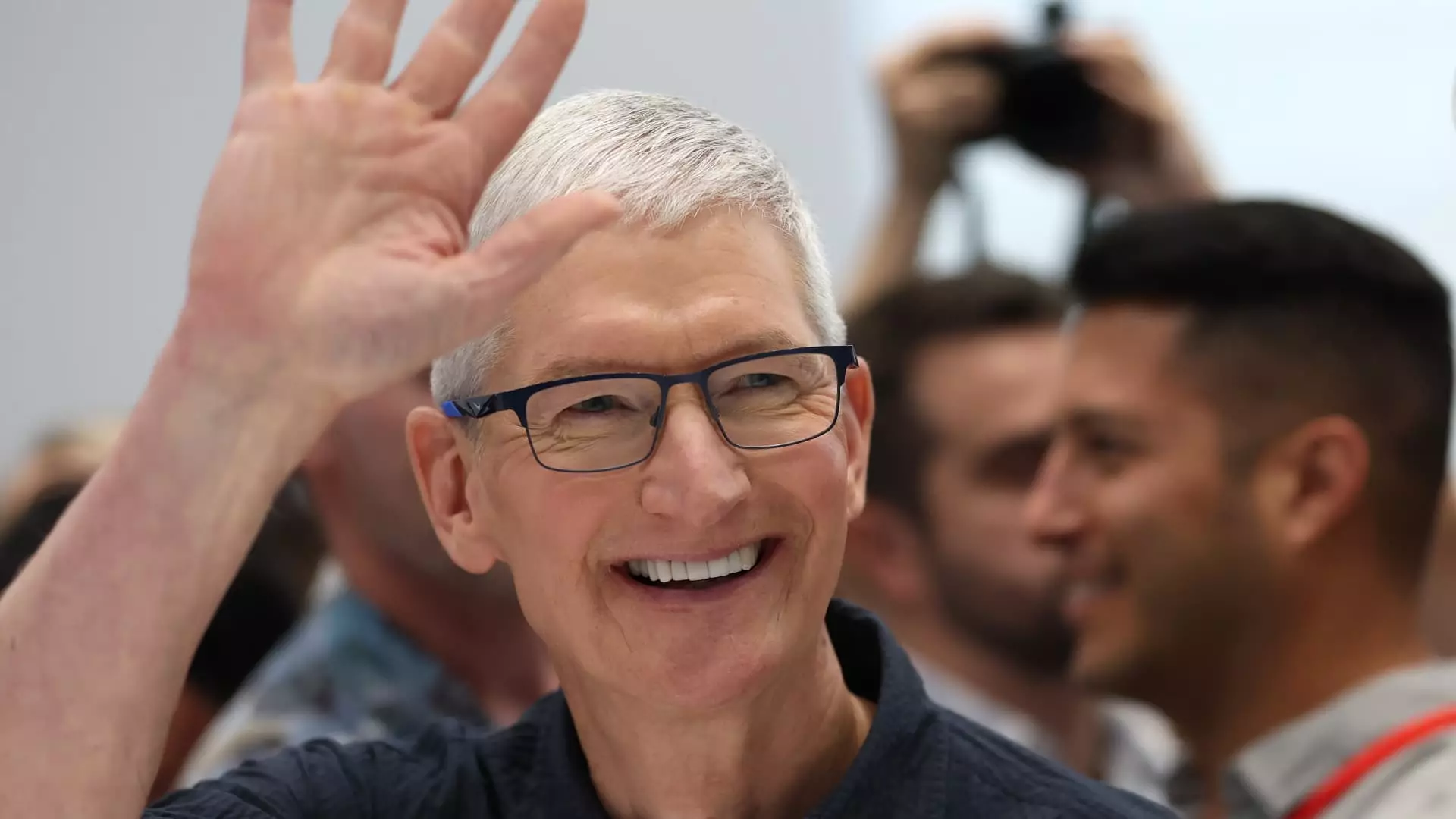In an impressive display of resilience, Apple Inc. has recently reached an all-time high in share value, marking a significant turnaround amidst a growing climax of skepticism from analysts regarding the demand for its latest offering, the iPhone 16. The tech giant’s stocks responded positively to data indicating increased iPhone shipments, countering fears of declining consumer interest in the rapidly evolving smartphone market. As Apple continues to interlace advanced technological features such as artificial intelligence into its products, it finds itself at a pivotal moment poised for both short-term gains and long-term implications.
Recent Data Fuels Optimism
Recent figures from the International Data Corporation (IDC) reveal that Apple’s iPhone shipments surged by 3.5% year-on-year, culminating in 56 million units sold in the third quarter. This number notably contrasts with the Wall Street consensus, which predicted only 50 million shipments. The shortfall in expectations suggests a potential revenue boon of between $2 billion to $4 billion, signaling to investors that consumer demand remains robust, despite an overall saturated market for smartphones. Such data emphasizes that Apple’s brand loyalty and continuous innovation are sustaining its market share, which remains steady at 17.7%.
While Apple’s dominance is challenged by competitors such as Samsung, which holds slightly more at 18.3%, the company’s efforts to enhance user experience could bridge that gap. As discussed by Nabila Popal, research director at IDC, promotions surrounding older models like the iPhone 15 and the anticipated launch of “Apple Intelligence”—a suite of AI tools—play crucial roles in sustaining consumer interest. This strategic pivot towards AI not only modernizes Apple’s offerings but also sets the stage for consumers feeling inclined to upgrade in preparation for the upcoming holiday season.
Despite the positive indicators emerging from IDC’s report, the sentiment across Wall Street analysts remains a mixed bag. Some analysts have voiced concerns that shorter shipping times for the new iPhone models could signify weaker demand, somewhat dampening the overwhelming optimism surrounding Apple’s stock. Notably, firms like JPMorgan, Barclays, and Bank of America have all commented on potential headwinds, advising caution as the popularity of the new AI-enabled devices continues to be scrutinized.
Nevertheless, there exists a counter-narrative emphasized by firms like Evercore ISI, which designated Apple as a tactical outperform. This indicates a more favorable outlook based on the anticipation of the company’s performance amidst generally subdued expectations. Analysts posited that as long as the company meets these lowered expectations, its stocks could rally. The juxtaposition of this cautious optimism illustrates the current volatility and unpredictability of the tech market.
On a broader scale, Apple’s stock has showcased a remarkable rebound since the lows observed in early August. As of the last trading session, Apple stocks hovered around $237.49, inching towards a record close. These impressive gains demonstrate not only Apple’s robust recovery but also its sustaining position as the most valuable publicly traded company in the United States. In comparison, its closest rival, Nvidia, recently reached a market cap of $3.4 trillion, reinforcing the competitive landscape where Apple must navigate its future ventures carefully.
Apple’s ability to retain its market leadership will necessitate continuous innovation and strategic timing in response to emerging technologies. With the holiday season approaching, consumer expectations for the tech giant will be high, and any technology-driven upgrade cycles must be effectively capitalized upon to ensure sustained profitability.
Looking ahead, it is clear that Apple’s trajectory is heavily influenced by its foray into artificial intelligence. The expected rollout of Apple Intelligence promises to reshape consumer interactions with technology, and how the company markets these advancements can significantly impact its financial outlook. Analysts like Jim Cramer advocate a long-term investment perspective in Apple, as they believe the company’s strategic positioning, combined with its innovative product line, will lead to favorable outcomes in the coming quarters.
The intersection of technology and consumer behavior presents both challenges and opportunities for Apple, demanding astute navigation through market sentiments and consumer expectations. Investors and stakeholders will need to remain vigilant as Apple attempts to leverage its innovations to reconcile present skepticism with future growth potential. The coming months will be telling of Apple’s ability to harness the excitement around AI technology while addressing market concerns effectively.
Apple’s recent stock performance, driven by encouraging iPhone shipment data and a strong brand presence, illustrates a company in flux, balancing between innovative advances and prevailing market cynicism. Amidst the uncertainty, the expectation for sustained growth anchors investor confidence while promising a narrative of resilience and adaptability in the face of changing consumer demands and preferences. The upcoming crucial months will provide clearer insights into how well Apple can maintain its competitive edge and profitability in an evolving technological landscape.

